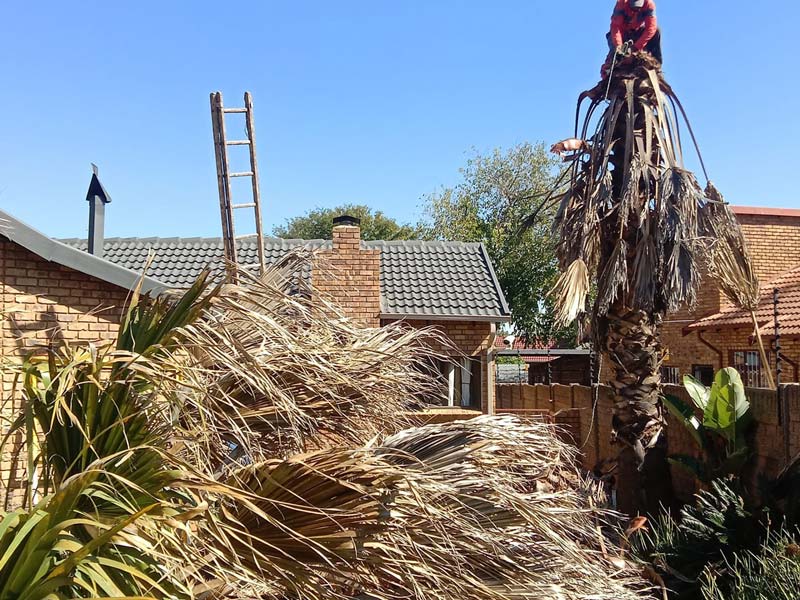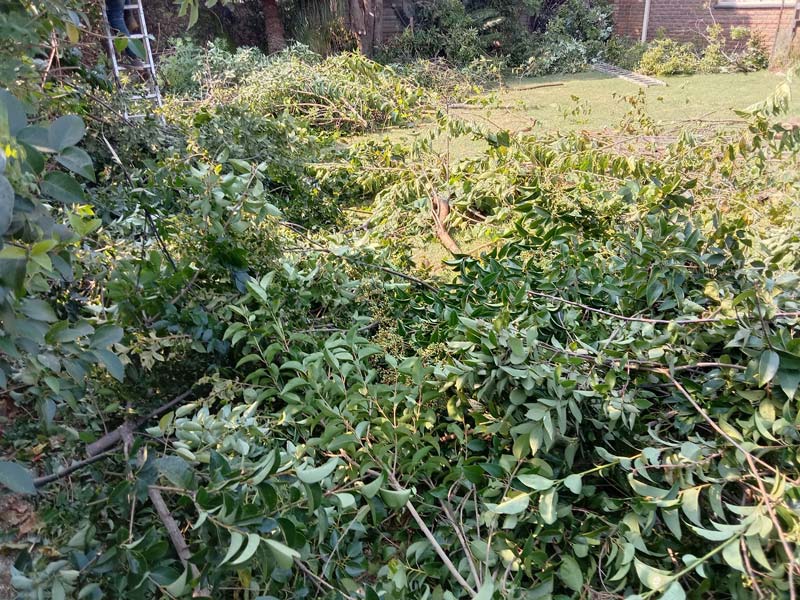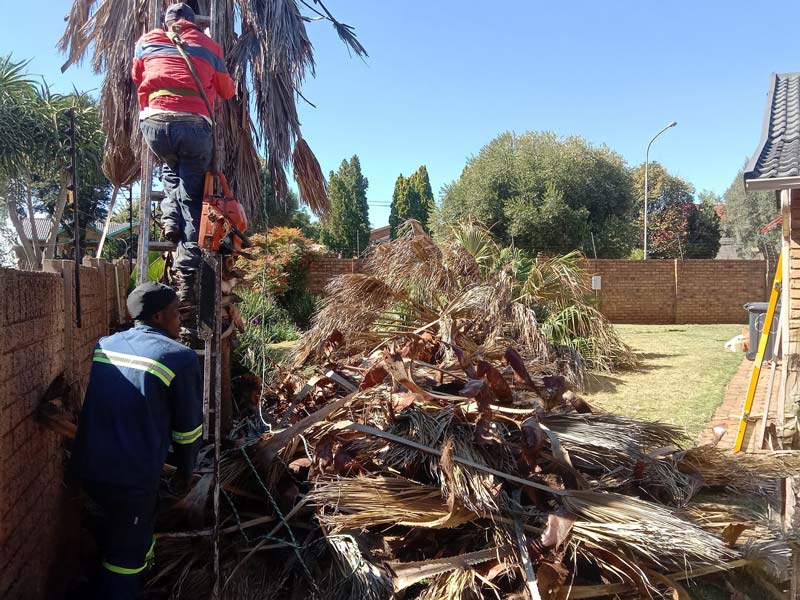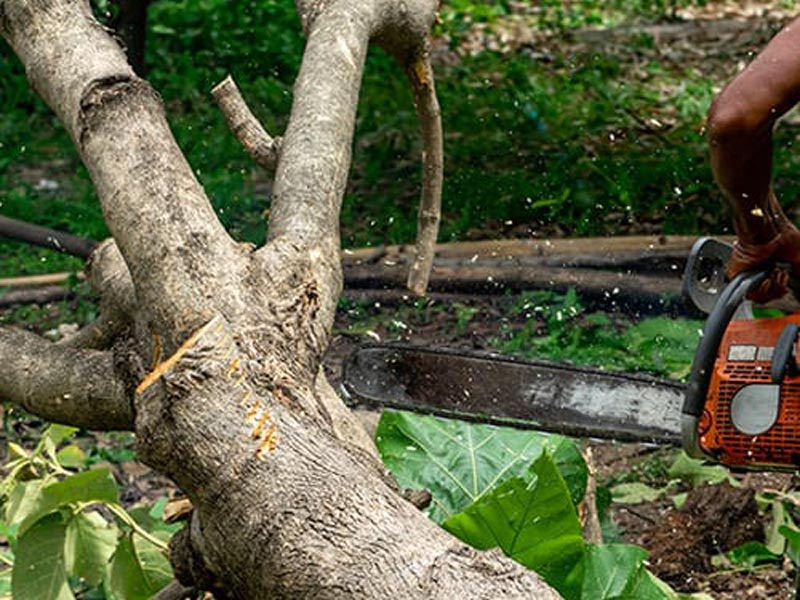Pruning tool hygiene is essential in preventing disease spread, particularly in regions like Pretoria East. Dirty tools can transfer pathogens between plants, leading to severe infestations. Gardeners should clean tools after every use, using hot, soapy water to remove debris. Disinfecting with a bleach solution or alcohol effectively eliminates harmful pathogens. Regular maintenance and proper storage of tools further guarantee they remain effective and promote healthy plant growth. For detailed techniques and best practices, further information is available.
The Role of Hygiene in Pruning Tools
Maintaining hygiene in pruning tools is essential for effective plant care. Dirty tools can harbour pathogens like bacteria, fungi, and viruses, risking disease transmission between plants. Implementing proper pruning techniques helps reduce contamination. Cleaning and disinfecting tools and containers reduces disease spread and is a fundamental practice every gardener should adopt. Additionally, keeping tools free from sap and debris ensures tools remain effective in promoting healthy tree growth and minimising infection risk. The condition and storage of tools play a significant role in hygiene. Tools should be regularly cleaned to remove sap and debris, enhancing their effectiveness and minimising infection risk. Safe tool storage also prevents damage, ensuring equipment remains in prime condition. By prioritising tool hygiene, gardeners contribute to healthier plants, reducing the chances of disease spread and encouraging thriving environments within the community.
Effective Cleaning Techniques for Pruning Tools
Ensuring the cleanliness of pruning tools is essential for effective plant care. Regular cleaning frequency is critical; tools should be cleaned after each use to prevent the spread of disease.
Start by using a garden hose to remove loose soil. For stubborn debris, employ a putty knife, then soak the tools in hot, soapy water. Rinse thoroughly and dry to prevent rust.
Disinfect using a 10% bleach solution or rubbing alcohol, ensuring that the blades are completely dried afterwards. Finally, store the tools in a dry, ventilated area to minimise moisture, ensuring they remain in peak condition for the next use.
Cleaning pruning shears frequently encourages a healthy gardening environment.
Importance of Timely Tool Disinfection
Timely disinfection of pruning tools is essential for preventing the spread of pathogens among plants.
This practice minimises the risk of disease transmission, particularly in environments susceptible to infections that can jeopardise plant health.
Furthermore, regular disinfection contributes to seasonal maintenance, ensuring tools are ready for use and promoting ideal plant recovery after pruning.
Prevention of Pathogen Spread
When pruning plants, the potential for pathogen transmission through contaminated tools cannot be overlooked. Proper cleaning of tools is essential for maintaining plant health and preventing disease spread.
This practice relies on effective pathogen identification and proper pruning techniques to minimise risks.
- Disinfect tools immediately after cutting diseased wood.
- Sanitize between different plant species to avoid cross-contamination.
- Take time to regularly clean and maintain tools to prolong their life. Regular tool hygiene helps ensure a healthier garden environment, which is crucial for preventing disease spread.
Seasonal Maintenance Importance
In the domain of pruning and plant health management, timely tool disinfection plays an essential role in maintaining overall garden vitality.
Seasonal cleaning before tool storage allows gardeners to remove dirt, sap, and potential pathogens that might survive winter. By thoroughly cleaning tools, one can prevent disease outbreaks in the subsequent growing season.
Moreover, ensuring tools are disinfected and dry helps to minimise rust and deterioration during storage. Regular seasonal maintenance extends the lifespan of tools, allowing for efficient pruning and better plant health management.
Ultimately, adherence to these practices supports a thriving environment for all.
Immediate Disinfection After Pruning
Maintaining the health of plants greatly depends on the immediate disinfection of pruning tools. Disinfecting tools right after use is essential to prevent transferring diseases, preserving plant health, and avoiding irreversible damage to rare species.
Key practices include:
- Cleaning dirt and debris before tool immersion in a suitable disinfectant solution.
- Using the correct disinfectant concentration, such as 70% isopropyl alcohol, for effective results.
- Replacing the disinfectant solution frequently, ideally every 10 plants or every two hours, to maintain effectiveness.
Choosing the Right Disinfectants
Choosing the right disinfectants for pruning tools involves comprehending various effective options available on the market.
Each disinfectant has specific application techniques, and compatibility with different materials must also be considered to avoid damage.
Therefore, selecting a suitable product not only guarantees effective sanitation but also prolongs the life of essential pruning equipment.
Effective Disinfectant Options
Selecting the right disinfectant for pruning tools is crucial for maintaining both tool integrity and plant health. Effective disinfectant options guarantee pathogen control, particularly when cleaning frequency is high.
- Hydrogen peroxide (3%) offers reliable disinfectant effectiveness, requiring 5-10 minutes of contact time.
- Quaternary Ammonium Compounds (QACs) work quickly, needing just 2 minutes for disinfection without the corrosion problems associated with bleach.
- Alcohol-based disinfectants provide rapid cleaning but may fail to control all pathogens effectively.
Choosing the right product not only protects tools but also improves the overall health of your plants, minimising disease spread.
Proper Application Techniques
In relation to applying disinfectants for pruning tools, understanding proper techniques is essential for maximising their effectiveness. Key methods for disinfectant application include immersion and wiping. Immersion in solutions like bleach requires longer contact times, while alcohol can be applied quickly.
| Disinfectant Type | Application Method |
|---|---|
| Bleach | Tool immersion (30 mins) |
| Alcohol | Wipe or dip (30 sec – 2 min) |
| Hydrogen Peroxide | Tool immersion (5-10 mins) |
Ensuring thorough disinfection between different plants prevents disease spread, making proper method adherence critical for effective pruning practices.
Material Compatibility Considerations
Comprehending the compatibility of disinfectants with pruning tools is important for effective maintenance and longevity. Proper disinfectant selection safeguards tools from corrosion, enhancing their lifespan.
Consider the following key points during selection:
- Quaternary ammonium compounds are non-corrosive, suitable for both metal and plastic parts.
- Alcohol disinfectants may require routine lubrication to prevent rust.
- Bleach and TSP are highly corrosive; rinsing post-application is essential to mitigate damage.
Selecting the right disinfectant guarantees efficient hygiene practices while preserving the integrity of tools.
Therefore, grasping material compatibility is critical for any tree care enthusiast in Pretoria East.
Physical Methods for Tool Sterilisation
Ensuring the cleanliness of pruning tools is vital for maintaining plant health and preventing the spread of diseases.
Physical methods for tool sterilisation involve various techniques aimed at eliminating harmful organisms. Boiling water, for example, can effectively kill pathogens when tools are immersed for 10 to 15 minutes.
Another approach is heat treatment through steaming or using an oven, which adequately sterilises tools while being environmentally friendly.
Moreover, a 3% hydrogen peroxide solution is an excellent option, as it successfully destroys spores without causing corrosion.
Physical cleaning prior to these methods greatly improves the efficacy of tool sterilisation, making every step essential.
Best Practices for Gardeners in Pretoria East
Maintaining a lively garden in Pretoria East requires diligent care and attention, particularly regarding the hygiene of gardening tools.
To guarantee tool durability and improve pruning efficiency, gardeners should adopt the following best practices:
- Remove soil and debris immediately after use.
- Regularly disinfect tools with a bleach-water solution.
- Store tools in a dry, sheltered area.
These practices not only diminish the risk of disease spread but also extend the lifespan of tools.






